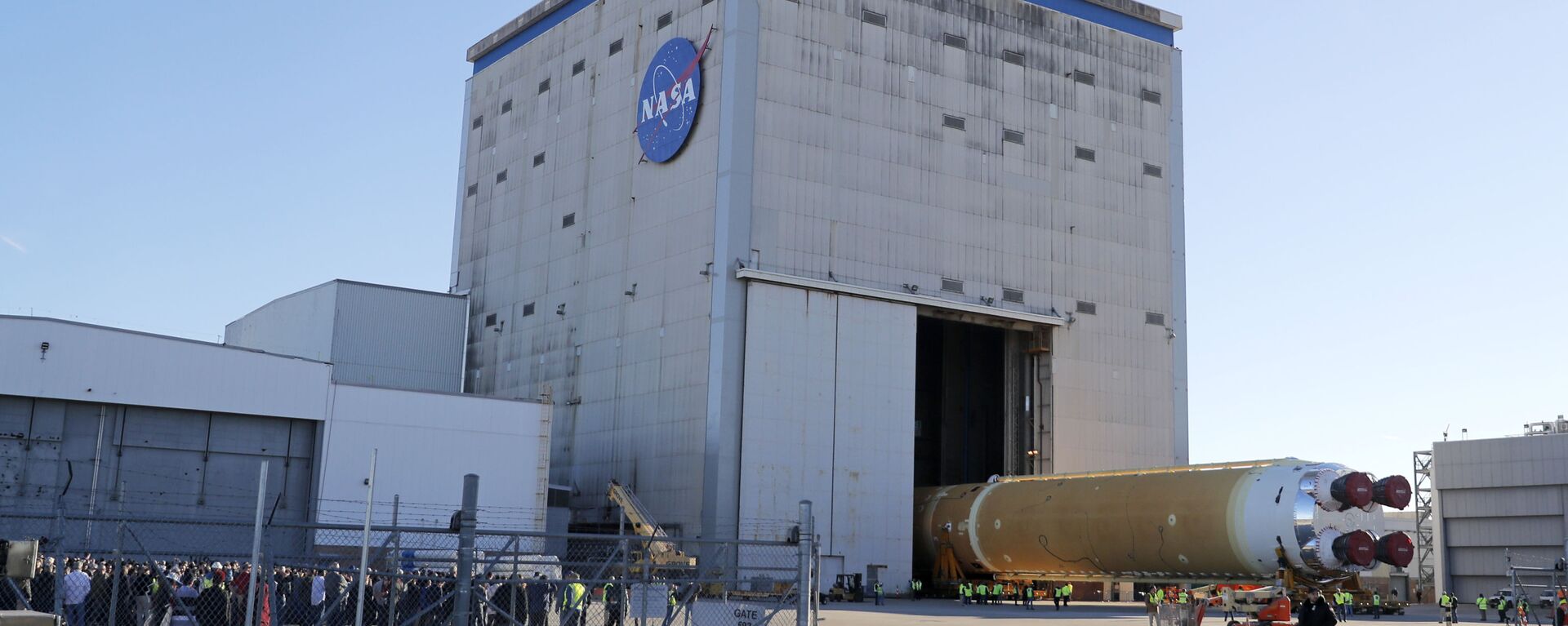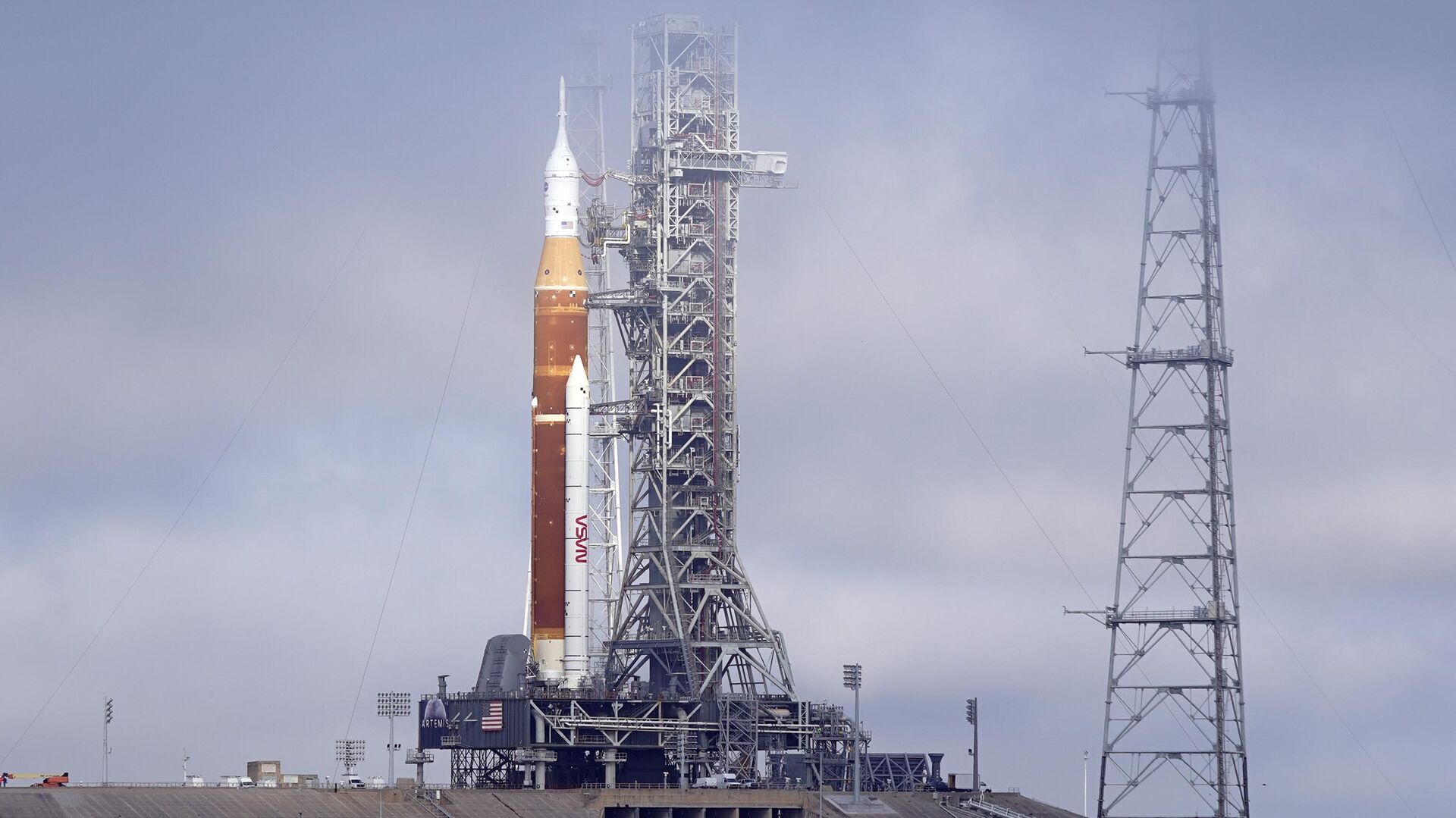https://sputnikglobe.com/20221116/artemis-1-unmanned-moon-mission-launched-after-being-delayed-several-times-1104282069.html
Artemis 1 Unmanned Moon Mission Launched After Being Delayed Several Times
Artemis 1 Unmanned Moon Mission Launched After Being Delayed Several Times
Sputnik International
WASHINGTON (Sputnik) - First unmanned lunar mission Artemis 1 with the Space Launch System (SLS) rocket and the Orion spacecraft was launched on Wednesday from... 16.11.2022, Sputnik International
2022-11-16T09:55+0000
2022-11-16T09:55+0000
2022-11-16T09:55+0000
science & tech
us
nasa
moon
moon mission
artemis
https://cdn1.img.sputnikglobe.com/img/07e6/04/01/1094408505_0:161:3071:1888_1920x0_80_0_0_b37e5c81d53b4c589e96feef2730bfe1.jpg
"For the first time, the @NASA_SLS rocket and @NASA_Orion fly together. #Artemis I begins a new chapter in human lunar exploration," NASA tweeted.The rocket was launched at 1:47 a.m. EST (06:47 GMT) on November 16. The start of the mission scheduled for Tuesday was postponed due to leaks of liquid hydrogen in the rocket. The launch of Artemis 1 was repeatedly delayed in September due to technical issues and poor weather conditions caused by tropical storm Ian in Florida.The mission should last several weeks spending at least five-six days in a distant retrograde orbit around the Moon. After separation from the rocket, the Orion spacecraft will deploy CubeSat satellites and begin its way to the Moon performing a trans-lunar injection. During the mission, NASA specialists will correct the spacecraft's trajectory and test its preparedness for further missions.The unmanned Artemis 1 mission is part of the Artemis lunar program, and it is going to certify further crewed lunar flights of the Orion spacecraft, with the first of them, Artemis 2, scheduled to launch in 2024. Artemis 2 is expected to be the first manned lunar mission since Apollo 17 in 1972, which is the most recent time people landed on the Moon.
https://sputnikglobe.com/20220924/artemis-1-moon-mission-launch-postponed-for-3rd-time-over-poor-weather---nasa-1101182773.html
Sputnik International
feedback@sputniknews.com
+74956456601
MIA „Rossiya Segodnya“
2022
Sputnik International
feedback@sputniknews.com
+74956456601
MIA „Rossiya Segodnya“
News
en_EN
Sputnik International
feedback@sputniknews.com
+74956456601
MIA „Rossiya Segodnya“
Sputnik International
feedback@sputniknews.com
+74956456601
MIA „Rossiya Segodnya“
science & tech, us, nasa, moon, moon mission, artemis
science & tech, us, nasa, moon, moon mission, artemis
Artemis 1 Unmanned Moon Mission Launched After Being Delayed Several Times
WASHINGTON (Sputnik) - First unmanned lunar mission Artemis 1 with the Space Launch System (SLS) rocket and the Orion spacecraft was launched on Wednesday from NASA’s Kennedy Space Center at Cape Canaveral following months of delays of the mission, NASA said.
"For the first time, the @NASA_SLS rocket and @NASA_Orion fly together. #Artemis I begins a new chapter in human lunar exploration," NASA tweeted.
The rocket was launched at 1:47 a.m. EST (06:47 GMT) on November 16. The start of the mission scheduled for Tuesday was
postponed due to leaks of liquid hydrogen in the rocket. The launch of Artemis 1 was repeatedly delayed in September due to technical issues and poor weather conditions caused by tropical storm Ian in Florida.

24 September 2022, 14:53 GMT
The mission should last several weeks spending at least five-six days in a distant retrograde orbit around the Moon. After separation from the rocket, the Orion spacecraft will deploy CubeSat satellites and begin its way to the Moon performing a trans-lunar injection. During the mission, NASA specialists will correct the spacecraft's trajectory and test its preparedness for further missions.
The unmanned Artemis 1 mission is part of the Artemis lunar program, and it is going to certify further crewed lunar flights of the Orion spacecraft, with the first of them, Artemis 2, scheduled to launch in 2024. Artemis 2 is expected to be the first manned lunar mission since Apollo 17 in 1972, which is the most recent time people landed on the Moon.


